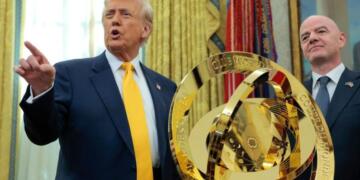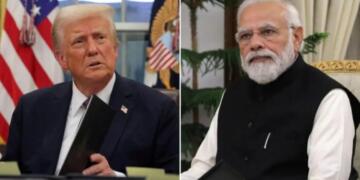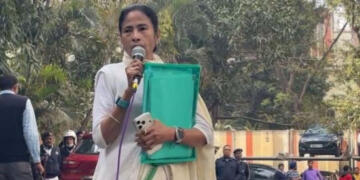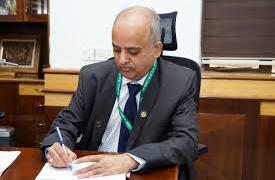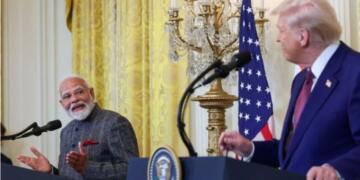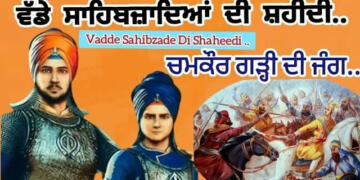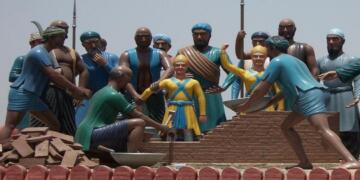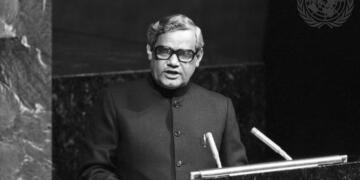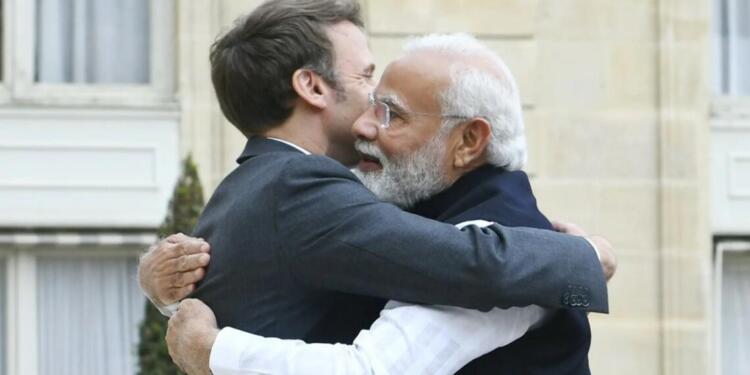Prime Minister Narendra Modi’s recent visit to the G7 Summit in Canada has reignited debate—not over policy or diplomacy, but over language. During his visit, he held several bilateral meetings with world leaders, including French President Emmanuel Macron. In his conversation with Macron, PM Modi initially spoke in English and then used a sentence in Hindi.
A section of opposition leaders sparked a wave of mockery on social media, with some accusing the Prime Minister of not knowing English. However, this is not the first time he has been ridiculed over his use of language—such jabs have frequently come from political opponents.
However, what they fail to acknowledge is that PM Modi’s linguistic choice is a deliberate effort to promote Indian languages on the world stage.
The aim of BJP government is to assert India’s cultural and linguistic pride as leaders from other nations
speak their native tongues unapologetically. This approach resonates with a broader national vision: to elevate Indian identity and foster confidence in its languages, beyond just English language.
This is not the first time Prime Minister Modi has spoken in Hindi on international platforms. What his critics often fail to recognize, however, is that his language choice is not a limitation—it is a conscious assertion of India’s cultural identity.
In a world where leaders from France, Germany, China, and Russia routinely speak their native languages with pride, Modi’s use of Hindi should be viewed through the same lens: as a reflection of national self-confidence and linguistic dignity.
Redefining Leadership Through Language
In a diverse and multilingual democracy like India, leadership is not defined by fluency in a colonial language, but by the ability to communicate effectively with one’s people. Modi has long championed the cause of linguistic inclusivity. In 2019, he urged citizens to learn one word from another Indian language each day—an appeal that underscores his broader commitment to celebrating India’s linguistic plurality.
His speeches are known for their clarity, emotional depth, and resonance with both domestic and global audiences. When he addresses Indian diaspora communities in Hindi, the emotional impact is unmistakable. It signals familiarity, roots, and pride—qualities that no translation can replicate.
The Irony of Criticism
There is a curious double standard at play. When foreign leaders speak their native languages on the global stage, they are praised for cultural authenticity. But when an Indian Prime Minister does the same, a section of the domestic audience rushes to deride it. This irony reveals more about the critics than it does about the speaker.
Language as a Symbol of Sovereignty
Modi’s use of Hindi on global platforms is not a rejection of English, but a rebalancing. It challenges the outdated assumption that international legitimacy requires Western linguistic codes. In doing so, it places Indian languages on equal footing, signaling that India’s voice—whether in Hindi, Tamil, Bengali, or any other language—deserves to be heard without translation or apology.
Amit Shah Calls for Pride in Indian Languages
Union Home Minister Amit Shah on Thursday emphasized the need to reclaim India’s linguistic heritage, calling Indian languages the soul of the nation’s identity. Speaking at a book launch, he said, “In this country, those who speak English will soon feel ashamed — the creation of such a society is not far away. Only those who are determined can bring about change. I believe that the languages of our country are the jewels of our culture. Without our languages, we cease to be truly Indian.”
“To understand our country, our culture, our history, and our religion, no foreign language can suffice. The idea of a complete India cannot be imagined through half-baked foreign languages. I am fully aware of how difficult this battle is, but I am also fully confident that Indian society will win it. Once again, with self-respect, we will run our country in our own languages and lead the world too,” he said.
Outlining the ‘Panch Pran’ (five pledges), coined by Prime Minister Narendra Modi, Shah said that these five pledges have become the resolve of 130 crore people of the country.
“Modi Ji has laid the foundation of the ‘Panch Pran’ (five pledges) for the Amrit Kaal. Achieving the goal of a developed India, getting rid of every trace of slavery, taking pride in our heritage, staying committed to unity and solidarity, and igniting the spirit of duty in every citizen — these five pledges have become the resolve of 130 crore people. That is why by 2047, we will be at the pinnacle, and our languages will play a major role in this journey,” Amit Shah said.
Opposition Could Learn a Lesson from Tharoor
A recent interview with senior Congress leader Shashi Tharoor went viral, especially regarding the ongoing language debate. Widely regarded for his command of English, Tharoor fully defended Prime Minister Narendra Modi’s preference for speaking in Hindi.
He said, “PM Modi has made it quite clear that he’s more comfortable speaking Hindi than English. Most of the time, when he meets global leaders, he speaks through an interpreter—and there’s absolutely nothing wrong with that.”
Tharoor added, “There’s nothing wrong with it. Leaders from countries like China and Japan do the same. So why shouldn’t an Indian leader? PM Modi prefers speaking in Hindi, and that’s perfectly fine. Many Indian chief ministers also communicate in their regional languages instead of Hindi or English, and that too is completely acceptable.”
Clearly, those who mock Modi at every opportunity have learned nothing from Tharoor. If language alone were the measure of leadership, some of these critics’ own followers might have become Prime Minister by now—but that isn’t the case.
Modi’s Push for Indian Languages Gains Momentum
Prime Minister Narendra Modi has championed Hindi and Indian languages not just symbolically, but by embedding them in policy, education, and governance. From speaking Hindi at the UN to broadcasting Mann Ki Baat in over 22 languages, Modi has promoted linguistic pride on a national and global stage.
The National Education Policy 2020 emphasizes primary education in the mother tongue, and the use of Indian languages has expanded across government portals, apps, and even the judiciary. Modi views India’s linguistic diversity as its strength, often praising regional languages as the soul of the nation.
For Modi, language isn’t just a tool—it’s identity, culture, and self-respect. His leadership is not only empowering Indian languages but also challenging the long-standing mindset of English superiority.


